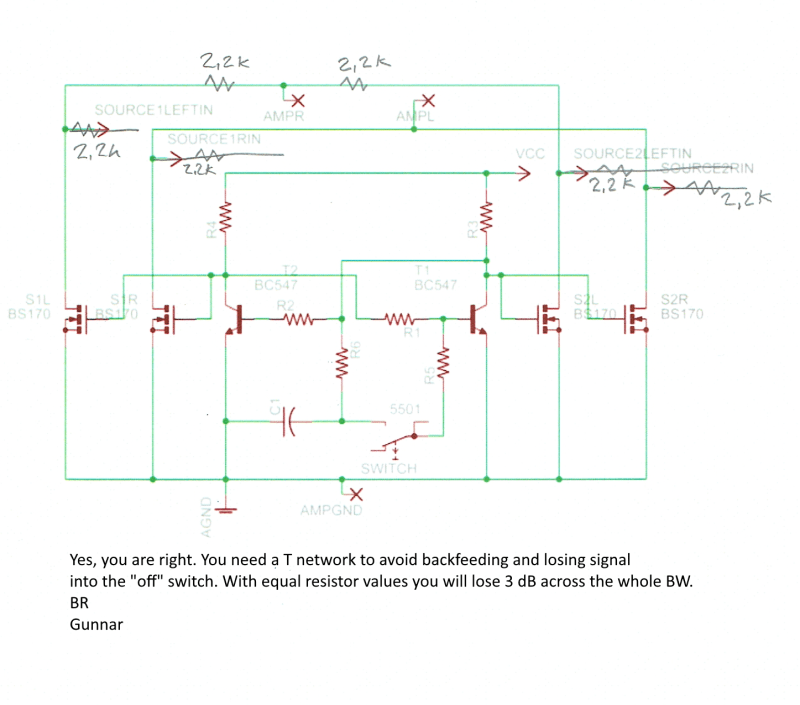I'd like to toggle between two sources of stereo audio (each having L, R and Neutral). Who can help ?
I'd also like to do that using one of those basic bistable on/off switches
(
- And more important, if possible: basic components only. No extra ICs apart from OpAmps, Schmitts and drivers that I happen to have laying around this time.
I not only don't have ICs at hand: they tend to degrade the quality of the signal if I don't buy the right one.
- I have not negative supplies, in case OpAmps be suggested
- Part count is not so important
- If transistors are required, BJTs are preferred
- I'd like to avoid relays too, although they will be my choice if none of the brilliant minds don't find an option that fits the criteria above
Thank you ahead for your time
I'd also like to do that using one of those basic bistable on/off switches
(
- And more important, if possible: basic components only. No extra ICs apart from OpAmps, Schmitts and drivers that I happen to have laying around this time.
I not only don't have ICs at hand: they tend to degrade the quality of the signal if I don't buy the right one.
- I have not negative supplies, in case OpAmps be suggested
- Part count is not so important
- If transistors are required, BJTs are preferred
- I'd like to avoid relays too, although they will be my choice if none of the brilliant minds don't find an option that fits the criteria above
Thank you ahead for your time




![[cry] [cry] [cry]](/data/assets/smilies/cry.gif)